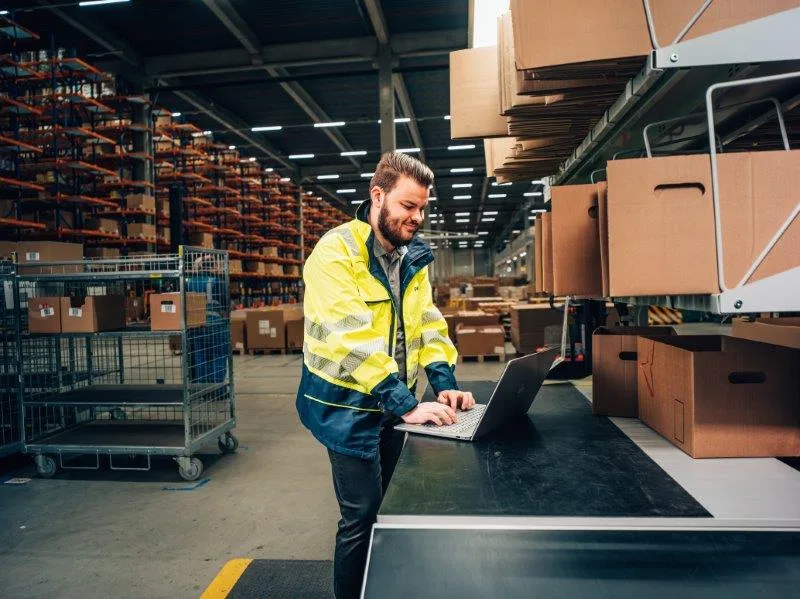
Discover the possibilities.
Fill in this form and we will contact you as soon as possible.
A prevention advisor is an in-house expert responsible for promoting workplace safety and health and implementing the Welfare Act. He or she:


Under the Belgian Welfare Act, every employer/company is required to have at least one prevention advisor, regardless of the company’s size. The specific nature of the role depends on the size of the company and the specific risks of the sector in which it operates:
Prevom provides an in-depth analysis of your organisation’s current safety situation.
Prevom provides an in-depth analysis of your organisation’s current safety situation.
Identified areas of concern are translated into a concrete planned campaign:
targets are set for improved prevention policies in both the short and longer term.
Identified areas of concern are translated into a concrete planned campaign:
targets are set for improved prevention policies in both the short and longer term.
Prevom provides active support for implementing and maintaining the prevention policy within your company.
Setting up and maintaining an effective prevention policy collective prevention measures requires expertise, experience and a thorough knowledge of current legislation. However, not every company has an internal prevention advisor with the right skills or time to take on this important task. This is where we come in.
We offer:

Our experienced consultants have a proven track record in various sectors, from SME’s to large companies. We understand that no two businesses are the same and therefore offer tailor-made solutions to suit your organisation’s specific needs. By working with us, you ensure that you comply with legal obligations, but above all that your employees can work in a safe and healthy environment.
Contact us today to find out how we can support you in building an effective and sustainable prevention policy.
Because with Prevom you’re always one step ahead of risks and hazards.


A prevention policy is a set of measures and actions taken by an employer to ensure the safety, health and wellbeing of staff in the workplace. It aims to prevent occupational accidents, occupational diseases and other risks at work. In Belgium, this policy is regulated by the Welfare Act of 4 August 1996.
Yes, drawing up a prevention policy is required by law for all employers in Belgium, regardless of the size of the company. The Welfare Act requires employers to have a policy aimed at protecting workers’ safety and health, supported by a dynamic risk management system (DRMS).
The dynamic risk management system (DRMS) is a systematic approach to managing workplace risks. This system includes:
The Global Prevention Plan is a mandatory document in which the employer outlines the strategic objectives for employee safety and health over the next five years. This plan includes:
The Annual Action Plan (AAP) is a compulsory document resulting from the Global Prevention Plan. The JAP describes the concrete actions to be taken in the coming year to achieve the goals set in the GPP. This includes specific measures to prevent accidents, improve working conditions and reduce risks.
The employer is responsible for creating and implementing the prevention policy, in collaboration with the Internal or External Service for Prevention and Protection at Work (SEPPT). In certain cases, the SEPPT may be supplemented with external consultants for specific expertise.
In companies with a Committee for Prevention and Protection at Work (CPPW), the Committee must also be consulted and involved in the development of the policy.
A prevention advisor supports the employer in the development, implementation, and monitoring of the prevention policy. They conduct risk assessments, propose preventive measures, and inform the employer about (changing) legislation, among other duties.
The prevention policy, of which the Annual Action Plan is a part, must be evaluated annually. This ensures that the policy remains up-to-date and effectively addresses new or evolving risks within the company.
The prevention service must also prepare monthly, quarterly, and annual reports to provide interim evaluations.
An employer’s failure to comply with the prevention policy can lead to:
Yes, even an employer with few employees must have a prevention policy. According to the Belgian Welfare Act, any company with employees, regardless of size, is required to take measures to ensure the safety and welfare of workers at work. This means that small businesses must also establish and implement a prevention policy.
Employees play an active role in prevention policies by:
The CPPW is a committee that must be established in companies with 50 or more employees. The CPPW consists of representatives of the employer and employees, with the prevention advisor acting as secretary. The CPPW’s tasks include:
The prevention policy should identify and manage all risks that may impact the safety and wellbeing of workers, such as:
In the event of a workplace accident, the employer must:

Fill in this form and we will contact you as soon as possible.